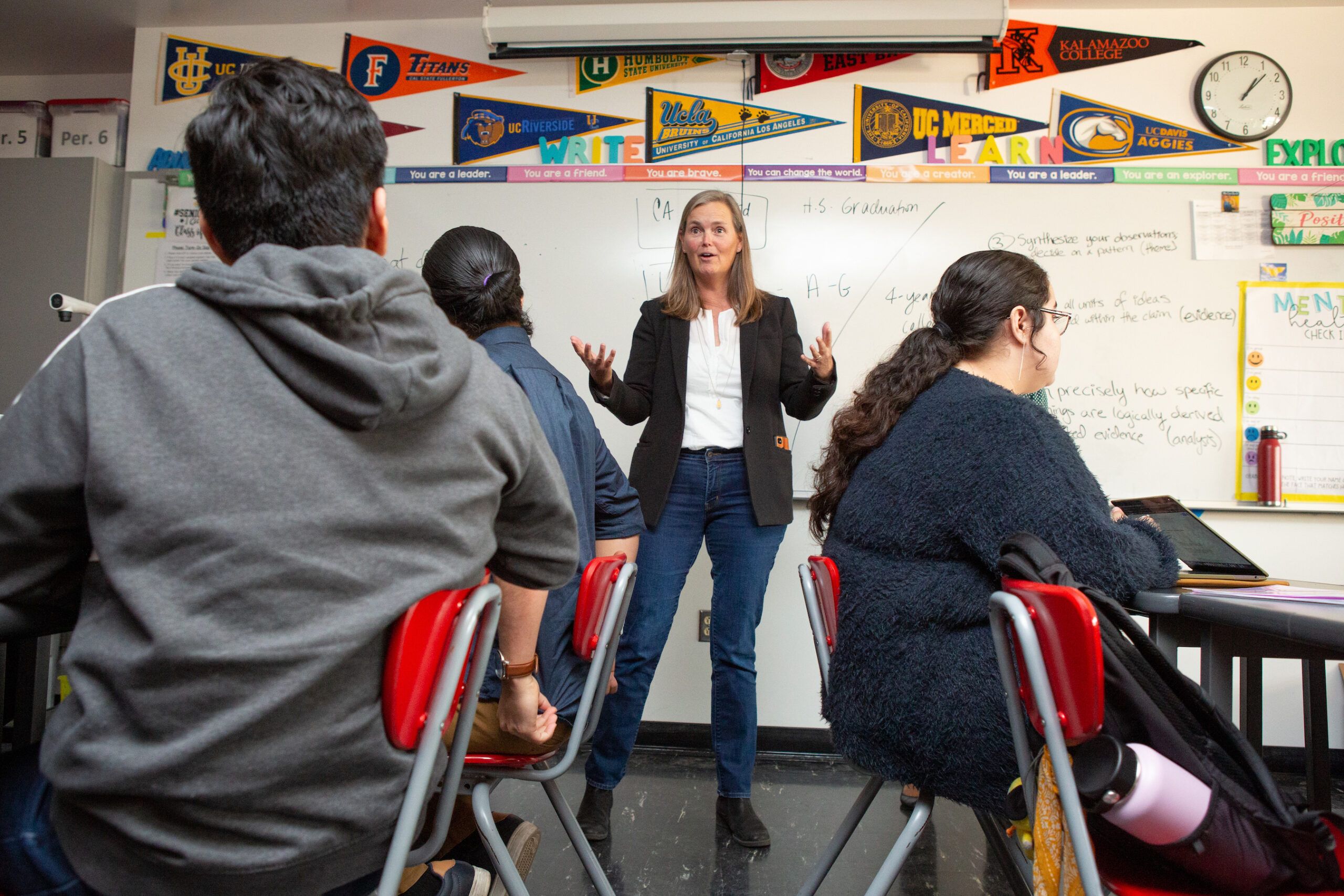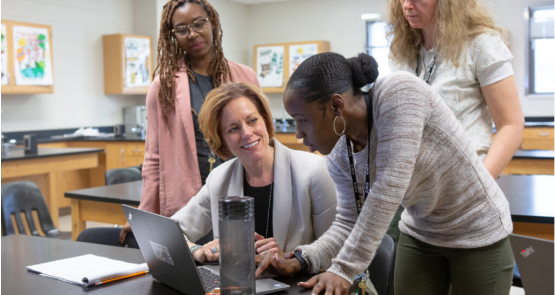7. Teaching Civics: How to Cover Society and Politics in Contentious Times
Given the recent upheavals in American and international politics and the shifting media landscape, there has been a very understandable desire for schools to make a commitment to teaching civics and critical thinking around social and political issues.
Citizenship and civics education has long been thought a central component of education. Indeed the public school system was largely based on the idea that an informed population was necessary for a well-functioning republic. Today, the importance of civics is recognized in theory, but in practice, little time is devoted to civics , at either the primary or secondary school level.
Civics education can start in elementary school, but middle and early high school are opportune times to commit to civics. Students typically have some background knowledge of government and current affairs, and they are eager to express and develop their developing understanding and opinion. But they need encouragement, guidance, and the right setting in order to do so effectively.
Even in the calmest times, teaching civics presents teachers with difficulties:
- Teachers must themselves be informed about the issues under discussion.
- They must be cognizant of students’ varying backgrounds and experiences.
- And they must be adept at fostering open and productive discussion around uncomfortable or controversial issues.
Below we outline some of these challenges for teaching civics and offer tips for overcoming them. The article concludes with ideas about how to conduct a discussion around the issue of the death penalty.

Teaching Controversial Issues
In our politically charged environment, it can feel risky for teachers and students alike to take on topics like social justice, the news media, and electoral politics.
The first step for teachers to take is to lower the temperature around some of these concerns.
They can do this by:
- Setting ground rules and norms.
- Stressing the importance of good faith debate. Make it clear to students that in debate you should criticize arguments not people.
- Emphasizing the need to make an effort to understand different points of view and to give people the benefit of the doubt.
- Establishing a clear distinction between facts and opinions.
Very often, asking students to express their opinions and engage with their peers’ opinions brings up new questions of fact. In a discussion of the death penalty, for example, some students might argue that it is effective as a deterrent while others might claim that prison sentences can have a similar effect. That might lead to further questions over whether the violent crime rate in states with the death penalty is depressed compared to those that don’t have it.
Teachers should be comfortable with letting these conversations go where they will, at least to a certain extent. If new questions of fact arise that are difficult to answer, teachers can use this as an opportunity to model good research skills.

Managing the Classroom During Civics Discussions
Of course, there are multiple effective ways to facilitate civics discussions. But a few key elements are shared by most.
Preparation. Students will likely flounder if they do not have enough background on the issue to be discussed. Preparation is crucial and should be focused on getting the information in students hands that they will need to make good arguments. Think of this something like a briefing before a debate.

For example, one civics teacher leads a discussion in his social studies class each year on the Supreme Court case, New York Times Co. v. United States, dealing with freedom of the press and national security. He has students read the case and complete an assignment identifying the basic arguments made by the Justices in their opinions. They then break up into small groups to discuss the text. The teacher even goes so far as to require students to demonstrate a good understanding of the topic before they go on to debate it.
If students know they’ll be expected to actively use the information they’re studying, it gives them some skin in the game, and is likely to help with focus and motivation.
Modeling Debate Skills. Many students don’t have a good mental model of what productive civics discussions look like. One teacher tries to solve this problem by showing students a video from a previous year’s discussion where students engaged with each other in an exemplary way. Other teachers use the “fishbowl” method, that alternates the students who participate in the debate with those on the outside, who act as observers reflecting on the strategies and effectiveness of the participants.
Learning how to debate productively also involves learning a new language and conversation pattern. It’s useful to be explicit about these things. Teachers can model this language by stopping conversation and rephrasing what students say — or by interjecting their own view. A lot of this language can also help lower the temperature on heated conversations. (Education researcher Terry Heick offers a good list of sentence stems for civics debate here.)

Mixing Media. Perhaps the most important skill involved in learning to be a critical thinker is learning to express yourself effectively and articulate your thoughts over a variety of different media. Writing exercises can be an excellent way to surface students’ understanding and views — especially those students who may not yet be comfortable expressing themselves orally. Quick in-class writing assignments can be a great way to begin. Writing stimulates thoughts and raises new questions that can then be asked and addressed in an open-class discussion Teachers might also experiment with audiovisual projects.
Fostering a Relaxed, Open Environment. Perhaps the most important thing is to make students comfortable trying out views and arguments.
Many teachers role-play debates — meaning students are pre-assigned to argue from a certain perspective. This both helps relax students, since their own opinions aren’t being scrutinized, and it gives them the opportunity to inhabit perspectives other than their own — a key component of critical thinking. Playacting can also be fun, of course!
Another idea is to have students switch sides in the middle of a debate. This forces them to integrate opposing viewpoints into their thinking and helps instill the habit of always considering the ways in which they might be wrong.
Example Lesson: Discussing the Death Penalty
Opening and Background. Like in any good written work or presentation, it can be good when teaching civics to begin with an attention-grabbing story or anecdote, especially something connected to current events, so that students will immediately see the relevance of the discussion.
So, with the death penalty debate, for example, you might begin by discussing the Supreme Court’s recent decision on the federal use of the death penalty, which permitted the first federal execution in 17 years.
Teachers might then survey the class to get a sense of students’ initial views and observations, before delving into more background on the court’s opinion and the dissenting opinions.
Discussion. Consider setting up formal mechanisms for debate, where students are assigned to adopt and argue for particular points of view. Then give students time in class or at home to research arguments on their own. The Death Penalty Information Center is a good place to start.
After a formal structured argument where groups of students are given a chance to present their arguments and respond to counter-arguments, it makes sense to lead a guided, metacognitive reflection on the debate. This should cover both reflection on the mechanism of the debate and questions like:
- What worked in your argument? What didn’t?
- How could you have better prepared?
- Were you able to anticipate and respond to counter-arguments?
- What did you learn about rhetoric, argumentation, using evidence, etc. that you can apply to future civics discussions (both in the classroom and outside it)?
Students should also address how their own opinions and thinking was strengthened or changed by the research and argumentation process. They should reflect on questions like:
- How did your opinion change?
- Did you find the issue more complicated than you thought at first?
- Did you have trouble reasoning through some of the arguments?
- Do you feel more secure in your opinions now?
Deepening. In this example, a civics educator might consider moving beyond the particulars of the death penalty debate to more abstract issues: like the purpose of the justice system as a whole. They can ask and address questions like:
- What is justice?
- What is the purpose of punishment and the justice system?
- Should we interpret U.S. founding documents more in the light of the intentions of the framers or in light of contemporary moral concerns?
- Do the principles behind our justice system need to be reformed? If so, should reform proceed radically or piecemeal?
Sources and Resources
Hess, D. E. (2009). Controversy in the classroom: The democratic power of discussion. Routledge.
An argument that teaching controversial topics is crucial for building critical thinking skills and civic-mindedness. Includes lots of examples and ideas.
Feith, D. J. (2011). Teaching America: The case for civic education. Rowman & Littlefield Education.
Contributions from thinkers and public figures on the importance of civics, and ideas and opportunities for educators.
Kuhn, D. (2005). Education for thinking. Harvard University Press.
A case for building argument into the curriculum. Includes examples for teachers and students.
Van Sledright, B. A., & Grant, S. G. (1994). Citizenship education and the persistent nature of classroom teaching dilemmas.
Empirical study and discussion of typical challenges teachers face when teaching civics.



